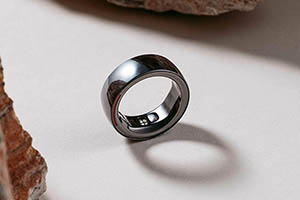The connected ring: high-tech jewelry at the service of healthcare and insurance
 As the smartphone market is reaching maturity, technology companies are seeking new growth avenues. The smart ring might just be their holy grail.
As the smartphone market is reaching maturity, technology companies are seeking new growth avenues. The smart ring might just be their holy grail.
Since its first apparition 10 years ago as a simple NFC (Near Field Communication) ring enabling contactles payment, the connected ring has evolved into a true concentrate of technology, integrating sensors to measure temperature, blood pressure and even ECGs.
The arrival of digital giants
The connected ring market has seen a boost in 2019, with heavyweights such as Apple and Samsung entering the race. Not all of them were successful, like Amazon, which pulled the plug on its "Echo Loop" project in 2020. Other players such as Circular, Oura and Amazfit have also made a splash.
The benefits for health and insurance
The connected ring has great potential in terms of health. The continuous monitoring of vital parameters provides an accurate insight into one's overall state of health, and allows people suffering from chronic diseases to keep track of their blood pressure, temperature and heart rate.
In the medium term, the data collected by the rings could enable remote detection of medical emergencies such as heart attacks and strokes, paving the way for faster, more effective intervention.
Insurers could also use this data to refine risk assessment in the health sector, develop more appropriate products and offer more competitive rates.
It is worth noting that the smart ring could be covered by mutual and insurance companies at some point in the medium term. Manufacturers generally negotiate with insurers for reimbursement of their devices, which are similar to medical devices. This is the case for the Apple Watch Series 4, which is reimbursed by certain mutual health insurance companies in the United States.
Read also | New technologies and insurance